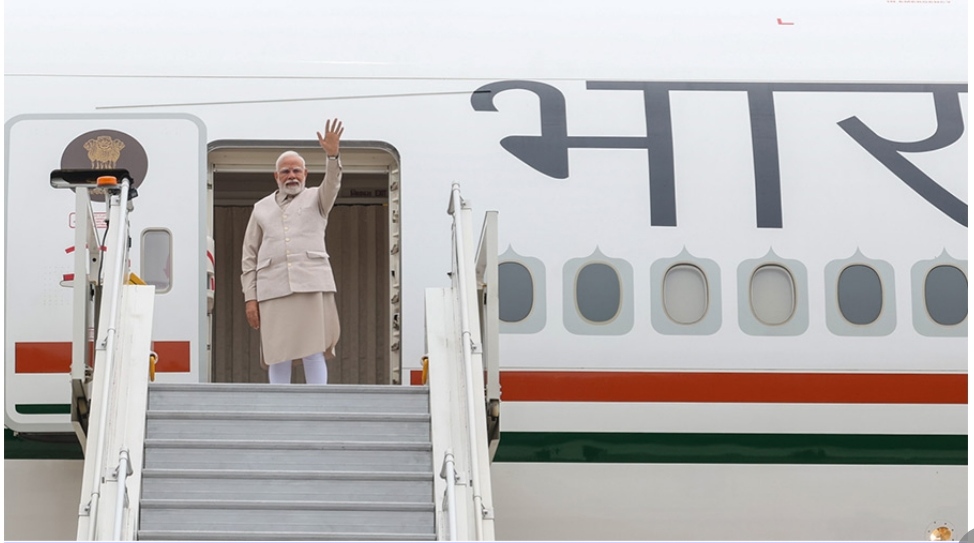India-UK FTA 2025

Once the Indian Cabinet approved the Indo UK Comprehensive Economic and Trade Agreement details, the two countries signed the deal during PM Modi’s visit to London on July 23-24 along with Shri Piyush Goyal, Union Minister for Commerce and Industry.
This new trade agreement is projected to boost annual bilateral trade between India and the UK by INR 29.58 Kharab or £25.5 billion.
India’s Foreign Secretary Vikram Misri however clarified that the finalization of the agreement still hinges on the completion of legal vetting.
The FTA needs to be first ratified by the British Parliament and then legally vetted by both countries. It is anticipated that the process will take approximately one year. The implementation will be done thereafter in phases.
Negotiations began in January 2022, marking an important step in the UK’s trade policy following Brexit. However, the progress was slow, partly due to political transitions in the UK, which saw four different prime ministers in office during this period, as well as national elections in both countries in 2024.
After the Labour Party came to power in July 2024, the UK resumed negotiations with India in February 2025. The deal was concluded following a series of intensive discussions between the trade ministers of both countries in London on April 28-29, 2025.
The India-UK FTA comes at a time of strong bilateral trade, with current merchandise trade valued at around INR 181000 Crores. In FY 2023-24, India recorded a trade surplus with the UK, exporting goods worth INR 109820 Crores against INR 71500 Crores in imports.
Both countries have now set a target to reach a total trade target of INR 1020000 Crores by 2030. The deal spans multiple sectors, including goods, services, and technology, aiming to support sustainable and inclusive economic growth, build resilient supply chains, and create high-quality jobs in India. This trade pact is set to be a cornerstone of India-UK collaboration under the framework of the 2030 Roadmap.
India’s trade pact with the UK is poised to enhance Indian export potential, improve mobility of skilled workers, and provide British businesses greater access to India’s expanding middle-class market.
The agreement will bolster India’s merchandise and manufacturing exports to the UK, reinforcing the positive export momentum already in place. Sectors such as textiles and apparel—currently facing barriers in the US market—are likely to benefit from reduced trade restrictions and improved market access in the UK.
A key objective of the deal is to double bilateral trade in goods and services by 2030.
On the labor front, the agreement introduces measures that will benefit Indian professionals working in the UK, particularly in the information and communication technology (ICT) sector. A waiver on national insurance contributions for up to three years is expected to increase their savings and, in turn, boost remittances to India. In 2024, India received an estimated INR 1105000 Crores in remittances—around 3.3 percent of GDP—with the UK ranking as the third-largest source after the US and UAE.
The UK, in return, is expected to gain progressively from enhanced access to India’s growing consumer base. One immediate benefit for British exporters will be a reduction in tariffs—by up to 50 percent—on 97 percent of alcohol exports, including whisky and gin.
The FTA also represents a strategic milestone for the UK, as it supports the country’s post-Brexit trade realignment and addresses supply chain vulnerabilities.
As part of the agreement, the UK will gradually reduce its import duty on whisky from 150 percent to 40 percent over the next decade. It may be noted that the Carbon Border Adjustment Mechanism (CBAM) will not apply under the FTA, alleviating concerns among Indian exporters.
The agreement liberalises trade in services, covering 36 sectors under Contractual Service Suppliers (CSS) and 16 under Independent Professionals (IP)—spanning IT, R&D, chefs, yoga instructors, and artists. Additionally, both countries will negotiate a reciprocal Social Security Agreement, enabling employees on temporary assignments (up to three years) to continue contributing to their home country’s social security system.
CSS and IP represent distinct categories of individuals who provide services under specific agreements, often linked to trade or immigration. CSS are employees of companies that lack a local establishment in a given country but provide services there under a contract. IP are individuals who deliver services independently under contract, hold relevant qualifications, and may require professional registration.
Zero-duty market access: Approximately 99 percent of Indian exports will enjoy Zero duty access to the UK market, enhancing export competitiveness.
Tariff reductions for Indian imports: Import duties on 90 percent of tariff lines will be reduced, with 85 percent of these becoming completely tariff-free over the next 10 years, offering notable savings for Indian consumers and businesses.
Lower tariffs on key UK exports: India has agreed to lower tariffs on a range of high-value British exports, including whisky, medical devices, advanced machinery, and lamb, making these products more competitive in the Indian market.
Reduced costs for Indian consumers: The agreement cuts import duties on a wide range of products, including cosmetics, aerospace components, medical equipment, salmon, electrical machinery, soft drinks, chocolates, and biscuits, potentially lowering consumer prices in India.
Affordable British imports: UK consumers will benefit from reduced costs on popular Indian imports such as clothing, footwear, and various food items, including frozen prawns.
Automotive tariff reductions: Tariffs on automobiles will drop significantly, from over 100 percent to 10 percent under a special quota system, reducing costs for UK automakers exporting to India.
Social security savings: Indian professionals working temporarily in the UK will benefit from a three-year exemption from social security contributions, reducing the financial burden for both employees and employers.
Expanded export opportunities for key sectors: The agreement is expected to boost exports from India’s labour-intensive sectors, including textiles, marine products, leather, footwear, sports goods, toys, gems and jewellery, engineering goods, auto parts, engines, and organic chemicals, creating new business and employment opportunities.
The two countries formally announced the conclusion of the Double Contribution Convention alongside their FTA. This pact is intended to eliminate the requirement for Indian professionals on short-term assignments in the UK to pay double social security contributions. It addresses a long-standing demand from Indian businesses seeking to reduce the financial burden associated with deploying skilled professionals abroad.
Currently, Indian professionals working temporarily in the UK are required to make mandatory National Insurance (NI) contributions, which can cost approximately £500 per employee each year, in addition to other taxes and healthcare charges. However, these professionals often do not benefit from these contributions, as they typically return to India once their assignments are complete.
India has social security agreements with several other countries, including Belgium, Germany, Switzerland, France, Denmark, South Korea, and the Netherlands. Such agreements allow Indian employees and their employers to continue participating in India’s domestic social security schemes, like those managed by the Employees’ Provident Fund Organisation (EPFO), while they are posted overseas, effectively avoiding double contributions.
The FTA is expected to create substantial employment opportunities in high-growth sectors such as manufacturing, technology, and professional services. It aims to facilitate the movement of skilled professionals, making it easier for business visitors, investors, intra-corporate transferees, and independent professionals, including yoga instructors, musicians, and chefs, to work across borders.
Additionally, Indian professionals in digital sectors such as architecture, engineering, computer services, and telecommunications will benefit from improved access to the UK market.
Under the trade agreement, India excludes pharmaceuticals, which limits the UK’s potential economic gains. Several other industrial products—such as diamonds, silver, smartphones, and optical fibers—from tariff concessions. Furthermore, duty relief on imports of petrol and diesel vehicles will be restricted to a fixed quota, while electric vehicle (EV) concessions will be capped at a few thousand units.
Key items placed on the exclusion list include plastics, base stations, television camera tubes, and related components, indicating India’s strategic protection of certain industries. For ICE (internal combustion engine) vehicles, duty reductions will be phased in gradually to shield domestic manufacturers.
The finalized deal aims to ease UK access for products like luxury cars. Automotive tariffs will fall from over 100 percent to 10 percent under quota limits, benefiting firms like Tata Motors and its subsidiary Jaguar Land Rover.
Despite strong EV growth in India—with April 2025 sales up 56.87 percent year-on-year to 12,233 units—imports from the UK remain limited, totaling just US$2.75 million in 2024. Premium UK brands like Bentley and Rolls-Royce cater to a niche market.
India has also reportedly opted for a phased reduction of duties on other sensitive items, including ceramics, petroleum products, chemicals, aircraft engines, and engineering equipment.
India also aims to expand its partnerships with strategically important economies. It is actively working to finalize similar trade pacts with Gulf countries, as well as with Australia, Japan, Southeast Asian nations, and Latin American markets in 2025 and 2026. These agreements aim to strengthen India’s position in global trade and reduce its dependence on traditional partners.




